Skgorria
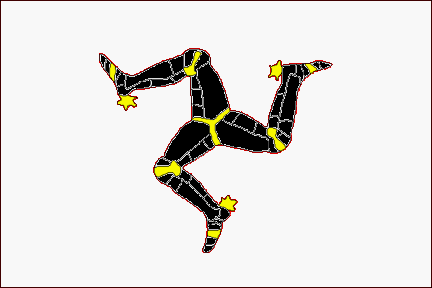
| |
| Flag of Skgorria | |
| Motto: Through fields of blood and pain, Skgorria marches on! | |
| [ ] | |
| Region | Iron Curtain |
|---|---|
| Capital | Skgorria City |
| Official Language(s) | Skgorrian, German |
| Government | |
| Population | |
| Currency | Zlar |
| NS Sunset XML | |
Overview
Skgorria is one of the last bastions of National Socialism left in the world. It has been occupied by the various foreign powers over the centuries, most recently the Soviet Union. Ruled with an iron fist by the Fuhrer, the people of Skgorria live out their lives admist a backdrop of propaganda and repression.
History
Origins And Establishment Of The Skgorrian Confederacy
Skgorria's past has been brutal and bloody. The nomadic tribes that inhabited the Skgorrian region were driven there by the Mongols and other groups, and so they settled there. The tribes came into frequent clashes with the current inhabitants of the area, and drove them out in a series of wars and campaigns of genocide. These people who left would go on to found Atopiana, thus explaining the deep-rooted hatred between both of these nations.
Up until the year 854 Skgorria was a loose collection of tribal groups who ruled over their own areas and had no common liege lord, yet shared the same racial heritage. In 854 a warchief known only as The Hammer united many of the tribes through a cunning mix of intrigue, marriage and war. He ruled with an iron fist and led 2 great campaigns of expansion during his lifetime at the expense of the Grosstapians and Atopians, yet upon his death these conquests were reversed as no-one lacked the resolve of the Hammer to hold the tribes together. It would over a hundred years until another leader united Skgorria.
Arkan Peter was of the same clan as the Hammer, and realised that the tribal chiefs were too independent to force into a unified government. Thus he formed the Skgorrian Confederacy, in which all tribal chiefs agreed to unite in case of invasion or conflict from outside. Internal disputes were to be handled as the chiefs saw fit. This paved the way for the tighter rule that was to follow. Historians dispute as to what was the main factor that took power away from tribal chiefs and placed it into the hands of the King, but the most common contenders are:
- the establishment of a common army under central command by the King, meaning that local rulers no longer had control of their military destiny
- the creation of the Confederate Council, to which each tribe sent one representative and all legislation was passed through it with the King's approval.
- the Atopian invasion of 986, which saw Skgorria heavily defeated in the field and highlighted the need for greater unity
The Dominion of the Crescent And The Rise And Fall Of Brzno
From the years 999-1004, a large wave of Islamic expansion engulfed the region and by 1004 Skgorria, Atopiana and Grossetape were all conquered under Sheik Eil Shier. Thousands died because they would not convert, and it took many years for Islamic rule to weaken before a Grosstapian warlord named Brzno to overthrow the Muslims by crushing their army using a combined force of Skgorrians, Atopians, Grossetapians and mercenaries in the Battle of Four Rivers in 1123. The employment of Western European-style heavy cavalry was key in smashing the Muslim lines, as they had only been used to the light horsemen used by the Skgorrians.
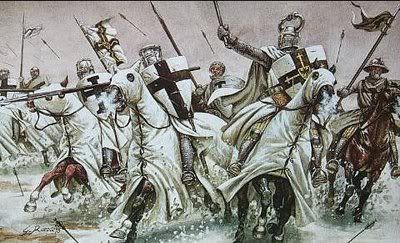
Above: Skgorrian and mercenary heavy cavalry charge the Muslim lines across a shallow fjord
Brzno believed it was his Holy Destiny given to him by God to crush the Muslims and drive them out of the region. Muslim captives and people who had converted to Islam were shown no mercy and were executed in horrific manners. Not for the first time and not for the last, ideological and racial differences lead to genocide.
Brzno established the Kingdom of Brzno in 1124, uniting Skgorria, Atopiana and Grossetape for the first time under one rule. No group was happy about it, but Brzno was able to keep all subdued through fear and force. The Kingdom of Brzno lasted until 1353, when it was suddenly invaded and conquered by Poland
Under Poland To Under The Hammer And Sickle
From 1353 Brzno formed part of the Polsh Empire, until a revolt lead by a descendant of the original warlord Brzno in 1600 seperated the region from the Polish Empire. However this new Brzno did not last long, and within a year all of the original composites of Brzno declared independance.
The reformed Skgorrian Confederacy was even more centralised in its rule, as it was a common belief that disorder and a lack of unity had lead to the downfall of Skgorria. Skgorria, Atopiana and Grossetape had many border clashes and skirmishes, but the 3-way war from 1772-1774 weakened them irreversibly. Czarist Russia launched a campaign in 1776 and conquered the region by 1778, with Skgorria being the last region to fall. During this campaign, Atopians and Grossetapians served in the Czar's army against Russia and many Skgorrians are still bitter about this. Never again would Skgorrians display any enthusiasm in being linked with the Atopians and Grosstapians under one government.

Above: Skgorrian dragoons advance during a short-lived counterattack against the Russians in 1777.
After the collapse of Czarist Russia, the Atopians formed an anarchist society inspired by the Ukraine and Mahkno. Grosstape attempted to invade Skgorria, but were repulsed with heavy losses from the Grosstapians. A Skgorrian counter-attack failed, and in 1922 the Red Army rolled in and conquered all three countries as Atopiana was too disorganised and Skgorrian and Grossetape were exhausted from war.
The Soviet Socialist Republic of Brzno was established in 1923 under the Communist Party of Brzno, a group that had enjoyed little support in the region before the Soviet Invasion. During the 1930s an underground fascist movement grew in Skgorria, playing on religious divides and ethnic hatred. In 1934 the National Socialist Brzno People's Party (NSBPP)was established in secret and began distributing pamphlets and propaganda, enjoying much support from the Skgorria populace. These years of secret resistance to Soviet rule would be key in establishing the Iron Rule...
The Iron Rule And Independance
In 1941, Operation Barbarossa swept through the USSR and threw the Soviet heirachy into chaos and thus starting the War of '41. Seizing this chance, the NSBPP swept to power and overthrew their Soviet masters as the Germans invaded and conquered Brzno, bringing with them many settlers. Under Olgich Peter, taking the last name of the Skgorrian hero who first founded the Confederacy, the Skgorrian Confederacy rose once again under a modified Nazi doctrine known as the Iron Rule. Olgich Peter led his nation in direct collaboration with Nazi Germany, and even allowed men from his nation to volunteer for the Waffen SS.
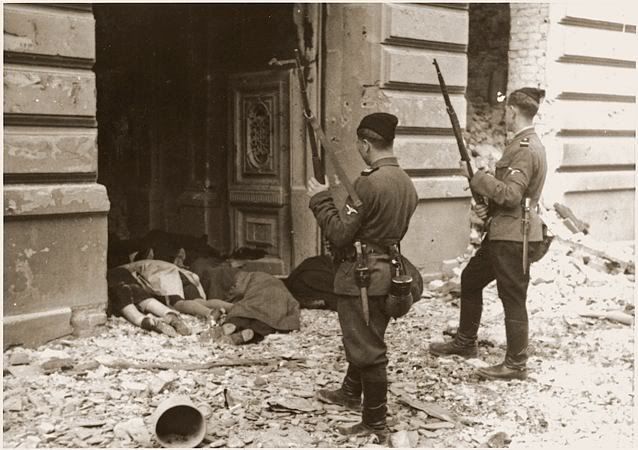
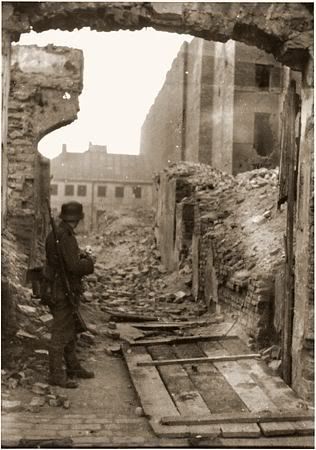
Top: Skgorrian SS men inspect their handiwork during Olgich Peter's consolidation of power. Above: A Skgorrian SS trooper of 'Landstorm Skgorria' awaits a Soviet attack in Berlin.
The Skgorrian Military fought directly alongside the Germans in many major battles, and some Skgorrian units were cut off from their homeland when the Soviets invaded in 1944. At least one Skgorrian Waffen SS company is know to have fought in the Battle For Berlin.
Soviet reprisals were harsh against Skgorria and the German settlers who took Skgorria to be their new home, indeed the USSR relocated many German POWs and ethnic Germans to Skgorria after the war, giving Skgorria a sizable German minority. Skgorria was reintegrated into The Soviet Socialist Republic of Brzno until 1989.
Following the collapse of the Soviet Union in 1989-90, the Socialist Republic of Brzno fell into a prolonged and bloody civil war. The Communist Party of Brzno (CPB) tried in vain to retain its iron grip on the nation, but when the banned National Socialist Brzno People's Party (NSBPP) rose - and with it a significant chunk of the armed forces, particularly the Catholics from the province of Skgorria - other armed factions rose in opposition. Within a month, Brzno had fractured into its provinces. The nascent Skgorrian Military and the NSP were prevented from taking the central Grossetape province by a combined effort by the Brzno Anarchist Federation and the Atopian Worker's Party, a nationalistic left-wing group located in the southern Atopia region. The leftist alliance was rapidly dominated by the highly organised Anarchist Federation, which instituted a program of Makhnovist reform in order to ensure a successful revolution.
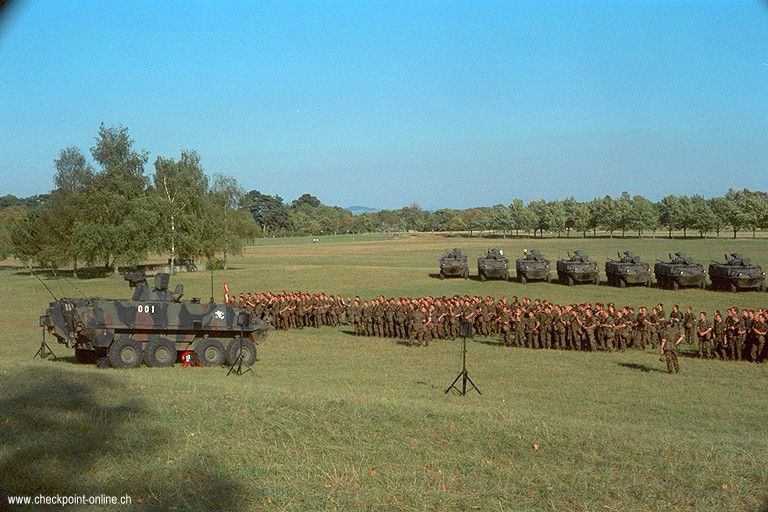
Above: NSBPP troops in a secret staging ground. Bellow: Grosstapian refugees flee the Skgorrian onslaught
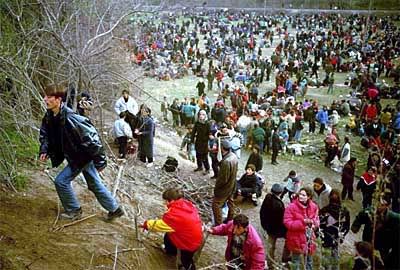
Meanwhile, Grossetape became a battleground. It was fought over by the divided Brzno armed forces and the militias that became rapidly common on all sides. The Grossetapens themselves demanded independence, and fought to achieve this. To the north-west, three smaller provinces united as the 'Federation of Katarznya', and established a centre-right government. The CPB had, by the start of 1990, almost ceased to exist as a viable force, and settled into a pattern of guerilla raids across what had been Brzno.
By late 1993, the fronts had stabilised, and fighting began to die down. However, it wasn't until March 1994 that peace at last came to the region, and the new nations could begin the task of establishing themselves properly.
Into the Future
In 2001, the Confederacy of Skgorria underwent a name change and was renamed "The National Socialist State of Skgorria" with little apparent international concern. Skgorria continues to expand its role in international politics, taking a steadily larger role in both military and diplomacy.
Government and Politics
The Leader is the head of state of Skgorria. He is unelected, and claims to be the personification of the eternal war against Zionism and Bolshevism. In addition, the Leader is the head of the military and can declare war on any nation or state. Lines of succession are unclear, as the first Leader was killed by the Soviets and the new Leader has not been in power for long. It is expected that he will appoint a successor directly.
Beneath the Leader is the Council, from which a representative from each of the following Ministries is appointed by the Leader:
Foreign Ministry
Interior Ministry
Ministry for Public Enlightenment and Propaganda
Ministry of Aviation
Ministry of Finance
Ministry of Justice
Economics Ministry
Ministry for Nutrition and Agriculture
Labor Ministry
Ministry for Science, Education, and Public Instruction
Ministry for Ecclesiastical Affairs
Transportation Ministry
Postal Ministry
Ministry for Weapons, Munitions, and Armament
Ministry of Foreign Deployments and Occupation
The Council has no powers in legislation and acts instead as an advisory body to the Leader.
The smallest administrative division of Skgorria is the Department, of which there are 72. Each Department sends a representative to the Parliament of Skgorria, which reflects and carries out the will of the Leader. Departmental representatives are appointed by the Leader, who carries all the legislative power in the government. The Parliament is an advisory body, rather than a legislative body as in some other nations.
Skgorrian politics follow a convention called "The Iron Rule" and no concrete definition has ever been given of this doctrine. It seems to promote strength, unity and dedication, yet bears more than a superficial resemblance to Nazi doctrine. In addition, no other political parties apart from the Skgorrian National Socialist Party (formerly the National Socialist Brzno People's Party (NSBPP))are allowed to exist.
Law And Order
There is no codified Skgorrian constitution, instead Skgorrian law mostly relies on a collection of old laws and codes, such as the Articles of the Confederation. However the Leader can change laws as he sees fit, with the goal of strenghtening the country and cutting out unncessary democratic delays
Skgorria maintains order using mainly its police force, who model themselves after the Gestapo of Nazi Germany. Police officers are given the power of arrest and detention without evidence, and they are all armed with pistols, though they have access to heavier munitions such as rifles and stun grenades.
 Above: An SP officer in standard patrol uniform
Above: An SP officer in standard patrol uniform
It is not unheard of for police officers to requisition assistance from the army if they need extra manpower or firepower, but army officers do not in themselves hold any police powers unless the Leader grants them. In the event of martial law, army officers are to assume command of police powers and police are to work in subordination to them.
The State Police (SP) have Departmental, Area, Section and Sub-Section Commanders who are responsible for keeping order in an space of territory. An Area is a subdivision of a Department, a Section is a subdivision of an Area. The size of each division depends on population density, for example an urban Section is likely to be smaller than a Section in a non-urban environment. Whilst technically any SP Commander can requisition any troops that fall under his area of jurisdiction, Departmental Commanders tend to distribute troops to the places where they are most needed.
The judiciary in Skgorria is directly appointed by the Departmental SP Commander with the Leader's approval, though the Leader seldom takes interest in such matters. Trials in Skgorria take place before a Judge with no jury. The death sentence is still in force, but is only allowed for the following crimes: murder, treason, insurrection and disobedience. The civillian judiciary is not allowed to try active members of the armed forces or of the SS (active and reserve), those organisations have their own method of trial and punishment.
Arts and Culture
Art and Literature
Skgorrian art and literature shows many Nazi influences, but also demonstrates features of Slavonic and Germanic culture. Often there is a solitary figure, who arises and conquers all. One example of this is The Rebirth Of Man by Edgar Zolyar, which shows a solitary teutonic man, sword in hand, battling his way through a sea of Jewish figures. The government uses such art and literature to incite and deepen prexisting racial hatred.
The government has learnt lessons from the previous communist regime about invigorating public morale, and such has many statues of famous figures in Skgorria history. Seen bellow is a statue of Olgich Peter, the first instigator of the Iron Rule.
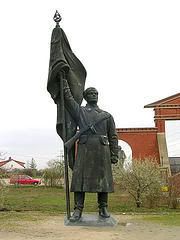
Television and Radio
Skgorrian television and radio is run by a corporation called Skgorrian Central Broadcasting, housed in the capital. Running twenty four hours a day, seven days a week, three hundred and sixty five days a year, SCB offers a wide variety of channels to cater for all of Skgorria’s needs. Every day at 6 o’clock, Skgorrian Central News is broadcasted across all networks and stations, lasting for approximately half an hour. At the end, every citizen sings the national anthem, an act designed to instill patriotism.
Sport
The only sport that has an official league is Speedball, part handball, part ice hockey, played on a court with steel walls and a ball also made of steel, Speedball lacks any rules and any kind of contact is allowed. Recent changes made three years ago included that teams could now had 9 players on court rather than 6, and targets on the floor and walls could be hit for bonus points. The Speedball League features a team from every Department, and each team plays each other twice, meaning a season often lasts two years. The top eight teams play a knockout in the Regional Playoffs, until only two remain who play each other for the Speedball Championship. The League has only been running for 12 years, even though Speedball has been played in Skgorria for many years before. So far, Dren’s Dragoons are looking the best team in the league.

Above: Portrait of a member of Dren's Dragoons grabbing the speedball
Music
Much Skgorrian music is martial, yet there is a strong folk tradition that is encouraged by the government in its attempts to connect with the Skgorria of old. Old Skgorrian values are heavily glorified by the government, and thus Skgorrian folk music is heavily promoted over foreign music. Most foreign music is either suppressed or ignored by the Skgorrian people, preferring instead songs like “Madam Zolfta And Her Little Dog” or “The Horst Wessel Song”.
The biggest band in Skgorria at the moment is the divisional band of 5th SS "Zionbane", called 'Totalslava'. The band members are as follows: Lead vocals: Wolfgang Heydrich (Lance-Corporal) Backing vocals/bass: Herman Yuklig (Corporal) Lead guitar: Ivan Servchenko (Private) Drums: Nikita Gorobets (Private) All are active members of 5th SS, although their active duties rarely involve front-line combat. The music they play is a mixture of martial, heavy metal and Skgorrian folk music. The current album from the band is called Blood and Honour.
Ethnic Diversity in Skgorria
Most of the population is Skgorrian by birth, an estimated 82%. 11% are of German descent, and most of the remainder are Russian. Skgorria’s Jewish population has been exterminated or forced to flee, along with any openly religious people, due to government policies towards race.
